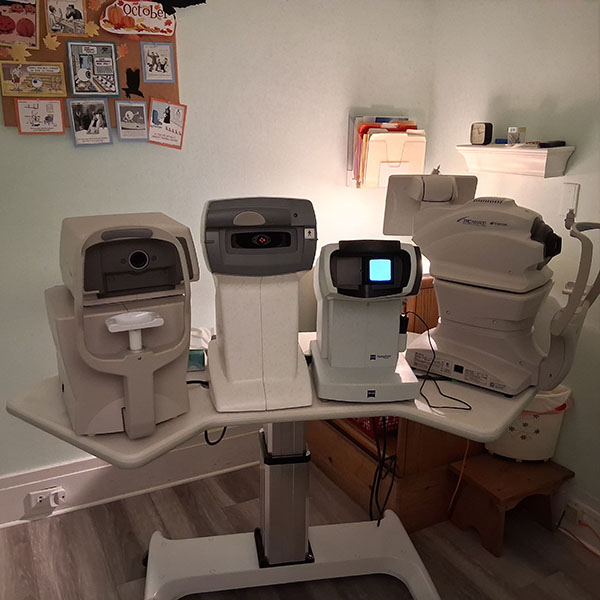Optometry
Periodic examinations are important to evaluate the health of your eyes, how clearly you see, and if you are having any difficulties with the visual demands of work, hobbies, or sports. You will be asked to fill out a history form prior to every examination, even when you think that nothing has changed since your last visit. The history form will ask about your health and ask for a list of the medications you take including the doses and how often you take the medication. While some components of wellness examinations are similar for all patients, with modifications for age, others vary based on your symptoms.
The history is often the most important part of the examination. The cause of many headaches are diagnosed through the history. The patterns of eye discomfort are important to focus our testing. We don’t know if you are having difficulty driving at night, sewing, reading, or seeing your computer screen if you do not tell us.
When we examine children, we often have to be even better detectives and appreciate the help of parents and teachers. Most classrooms now use Smart Boards or similar devices and students often do a great deal of copying. Children may have difficulty reading or getting their homework done in the evening because their eyes are too tired by that time.
Our goals are for you to have healthy eyes, see clearly, be comfortable, and be able to perform your activities efficiently.





